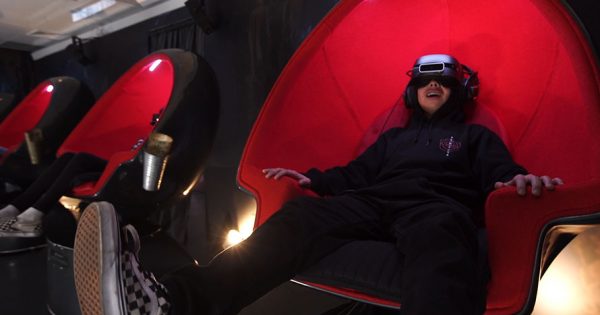The largest tech companies like Facebook, Google and Samsung have been pushing virtual reality for years, but could a legacy retailer like Walmart be the one to help the technology go mainstream?
While many brands are experimenting with emerging technologies with the help of agencies and vendors, Walmart has been quietly building the future of retail in-house. Earlier this month, the retail giant announced the debut of Spatial&, an incubator for immersive experiences such as virtual reality and augmented reality that has been in stealth mode for the past year.
During an onstage interview at the Brandweek: Challenger Brands event earlier this month, Katie Finnegan, CEO of Spatial&, said Walmart created the incubator to begin planning for what retail could or should be in five or 10 years.
Because of the company’s ubiquitous presence across suburban and rural parts of the county, it’s arguably better positioned to introduce the average person to technology they might not have been exposed to.
Here are a few of the ways Walmart is already thinking about developing AR and VR for retail:
Business decisions
Walmart and, Store No. 8, an incubator for the retailer’s long-term bets, aren’t developing VR for the sake of VR. Rather, they’re trying to figure out how the technology fits into the future of merchandizing.
“We see a holistic view of where we see the world going, where we see our customer going,” Finnegan said.
Last year, the company decided to experiment with with how VR and AR could help people decide what tent to buy. Because it’s something that’s hard to visualize on a website, the company built an AR experience that let shoppers see from their own homes what it’s like to walk around or inside a tent.
“We didn’t build it necessarily for public consumption,” Finnegan said. “It was more about sort of our R&D phase to then prove alright now we’re all on board, we see how this is going to be a step change in the consumer experience.”
Spatial& is just one of several incubators under the Store No. 8 umbrella. According to Finnegan, Store No. 8 spends about 12 months planning and researching what to focus on next. The CEOs of each incubator are able to put together proposals that, if they make sense, could receive resources from Walmart. However, because the success of the incubators isn’t based financial returns like Walmart itself, the goal is “operational and strategic returns” that keep the retailer relevant, she said.
“We always have to be tied into where do we see Walmart going,” she said.
There will always be a physical presence
The idea of virtual ecommerce might sound like big-box retailers are going extinct sometime in the future. However, Finnegan said, that’s not necessarily the case. She said she doesn’t see the need for a VR series of aisles. Rather, AR and VR could be used to enhance the physical, both in stores and at home.
“One of the things we saw as a white-space opportunity when we are assessing Spatial& is that this bet on VR has been used [elsewhere] around gaming and entertainment and some marketing type campaigns,” she said in an interview about the activation. “But we haven’t really seen it be able to drive transactions. And that’s really what we were excited to figure it out and provide that to customers.”
For its debut, Spatial& partnered with Dreamworks to promote the new movie How to Train Your Dragon: The Hidden World. From February through April, Spatial& is bringing a 50-foot tractor on a road show to more than a dozen Walmarts around the U.S. Equipped with a VR headset and other sensory integrations, including a haptic backpack and smells, viewers will be able to interact with dragons from the movie. Afterward, they’ll be able to go through a futuristic VR toy aisle before exiting through a gift shop where they can buy toys based on the franchise.
“The reason we believe that will be happening is you really are at the height of your emotional connection with the characters,” Finnegan said.

